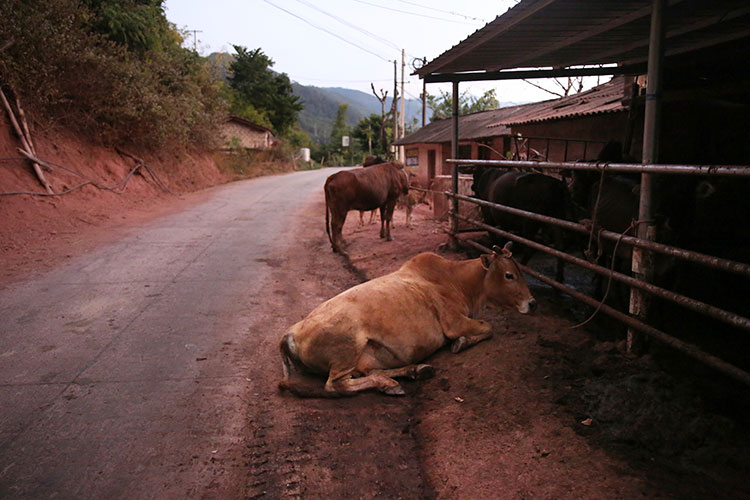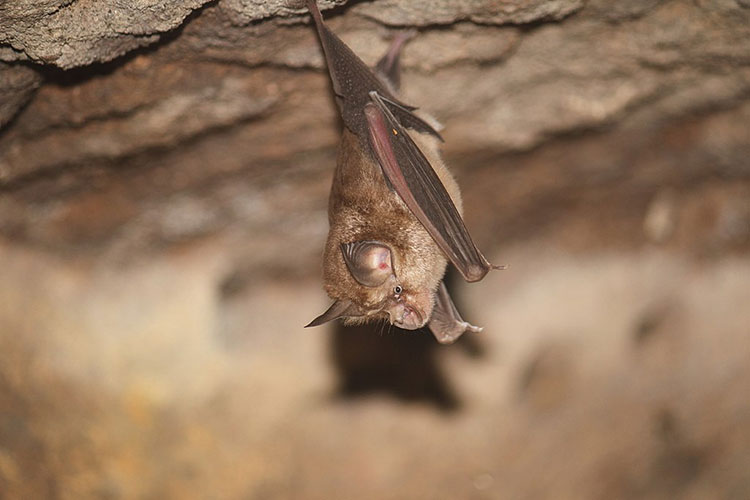Analysis reveals global ‘hot spots’ where new coronaviruses may emerge

Global land-use changes — including forest fragmentation, agricultural expansion and concentrated livestock production — are creating “hot spots” favorable for bats that carry coronaviruses and where conditions are ripe for the diseases to jump from bats to humans, finds an analysis published this week by researchers at the University of California, Berkeley, the Politecnico di Milano (Polytechnic University of Milan) and Massey University of New Zealand.
While the exact origins of the SARS-CoV-2 virus remain unclear, scientists believe that the disease likely emerged when a virus that infects horseshoe bats was able to jump to humans, either directly through wildlife-to-human contact, or indirectly by first infecting an intermediate animal host, such as the pangolin, sometimes known as the scaly anteater. Horseshoe bats are known to carry a variety of coronaviruses, including strains that are genetically similar to ones that cause COVID-19 and severe acute respiratory syndrome (SARS).
The new study used remote sensing to analyze land use patterns throughout the horseshoe bat’s range, which extends from Western Europe through Southeast Asia. By identifying areas of forest fragmentation, human settlement and agricultural and livestock production, and comparing these to known horseshoe bat habitats, they identified potential hot spots where habitat is favorable for these bat species, and where these so-called zoonotic viruses could potentially jump from bats to humans. The analysis also identified locations that could become easily become hot spots with changes in land use.
“Land use changes can have an important impact on human health, both because we are modifying the environment, but also because they can increase our exposure to zoonotic disease,” said study co-author Paolo D’Odorico, a professor of environmental science, policy and management at UC Berkeley. “Every formal land use change should be evaluated not only for the environmental and social impacts on resources such as carbon stocks, microclimate and water availability, but also for the potential chain reactions that could impact human health.”
Most of the current hot spots are clustered in China, where a growing demand for meat products has driven the expansion of large-scale, industrial livestock farming. Concentrated livestock production is particularly concerning because the practice brings together large populations of genetically similar, often immune-suppressed animals that are highly vulnerable to disease outbreaks, the researchers said.
The analysis also found that parts of Japan, the north Philippines and China south of Shanghai are at risk of becoming hot spots with further forest fragmentation, while parts of Indochina and Thailand may transition into hot spots with increases in livestock production.

“The analyses aimed to identify the possible emergence of new hot spots in response to an increase in one of three land use attributes, highlighting both the areas that could become suitable for spillover and the type of land use change that could induce hot spot activation,” said study co-author Maria Cristina Rulli, a professor in hydrology and water and food security at the Politecnico di Milano in Italy. “We hope these results could be useful for identifying region-specific targeted interventions needed to increase resilience to coronavirus spillovers.”
Human encroachment into natural habitat can also can indirectly increase exposure to zoonotic disease by reducing valuable biodiversity. When forest lands become fragmented and natural habitats are destroyed, species that require very specific habitat to survive, called “specialists,” may dwindle or even go extinct. Without competition from specialists, “generalist” species, which are less picky about their habitat, can take over.
Horseshoe bats are a generalist species and have often been observed in areas characterized by human disturbance. Earlier work by Rulli, D’Odorico and study co-author David Hayman has also linked forest fragmentation and habitat destruction in Africa to outbreaks of the Ebola virus.
“By creating conditions that are disadvantageous to specialist species, generalist species are able to thrive,” D’Odorico said. “While we are unable to directly trace the transmission of SARS-CoV-2 from wildlife to humans, we do know that the type of land use change that brings humans into the picture is typically associated with the presence of these bats who are known to carry the virus.”
While China has been a leader in tree planting and other greening efforts over the past two decades, many of the trees have been planted in discontinuous land areas or forest fragments. To tilt the ecological balance back in favor of specialist species, creating continuous areas of forest cover and wildlife corridors are more important than increasing total tree cover.
“Human health is intertwined with environmental health and also animal health,” D’Odorico said. “Our study is one of the first to connect the dots and really drill down into the geographic data on land use to see how humans are coming into contact with species that might be carriers.”
Co-authors of the paper also include Nikolas Galli of the Politecnico di Milano and David Hayman of Massey University
This research was supported by the Eni Enrico Mattei Foundation (FEEM), the Cariplo Foundation (SusFeed project 0737 CUP D49H170000300007), Regione Lombardia (RUD0CONV01/ASSO project D44I20002000002), a Royal Society Te Apārangi Rutherford Discovery Fellowship RDF-MAU1701 MAU1701, and the Massey University Foundation.
RELATED INFORMATION
